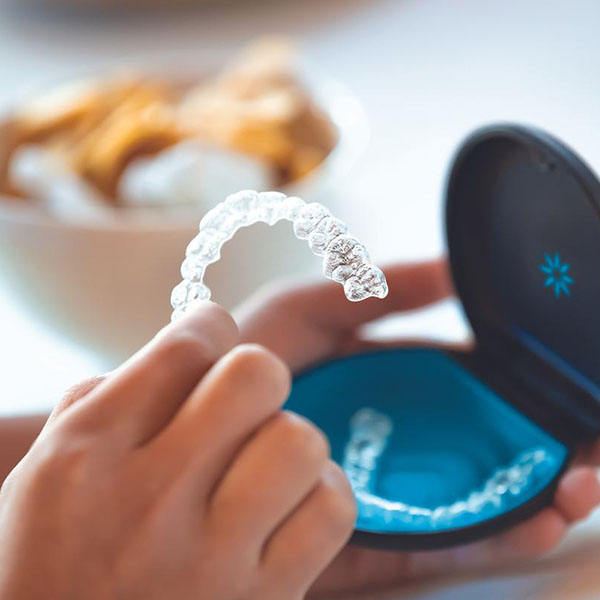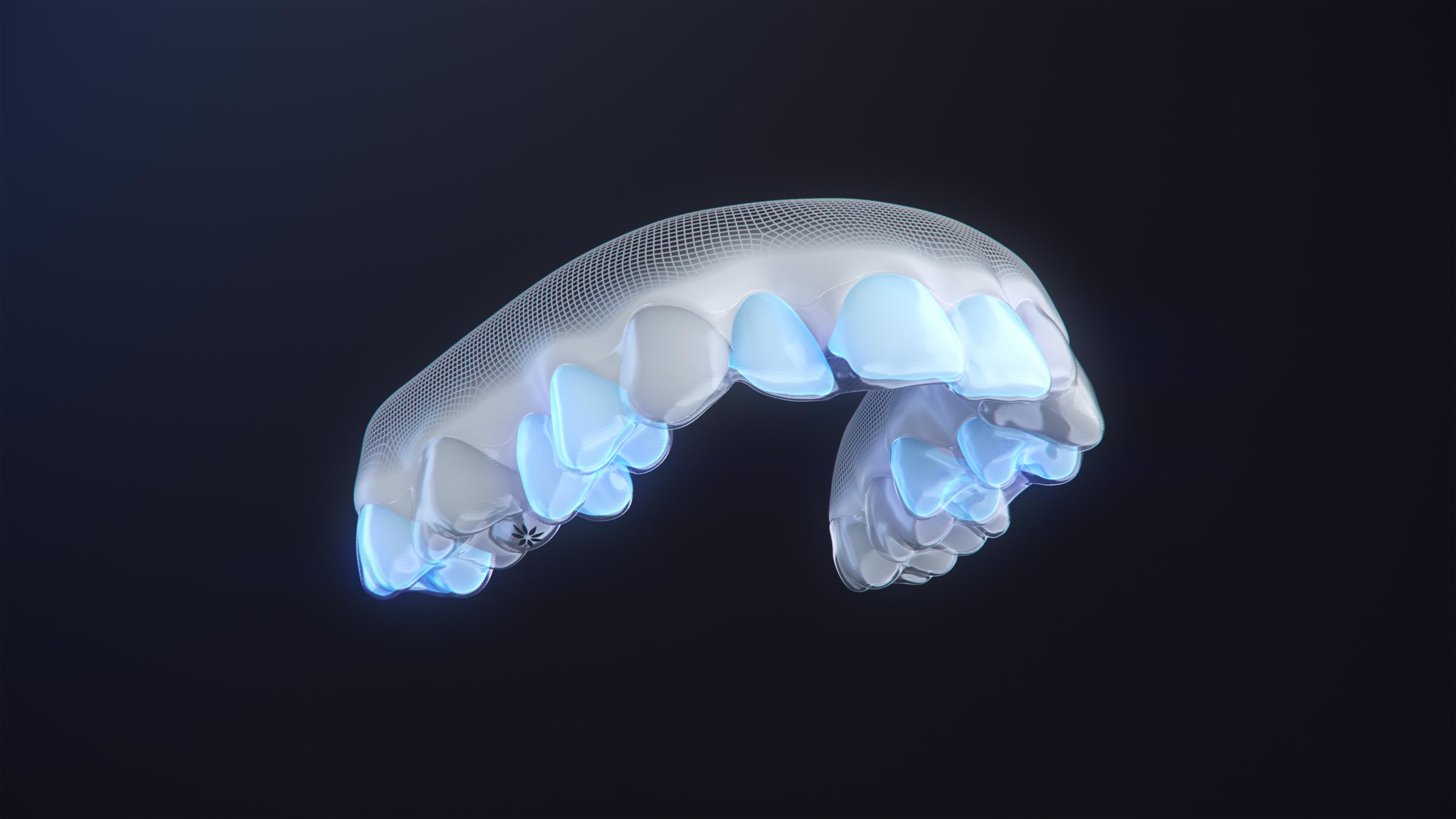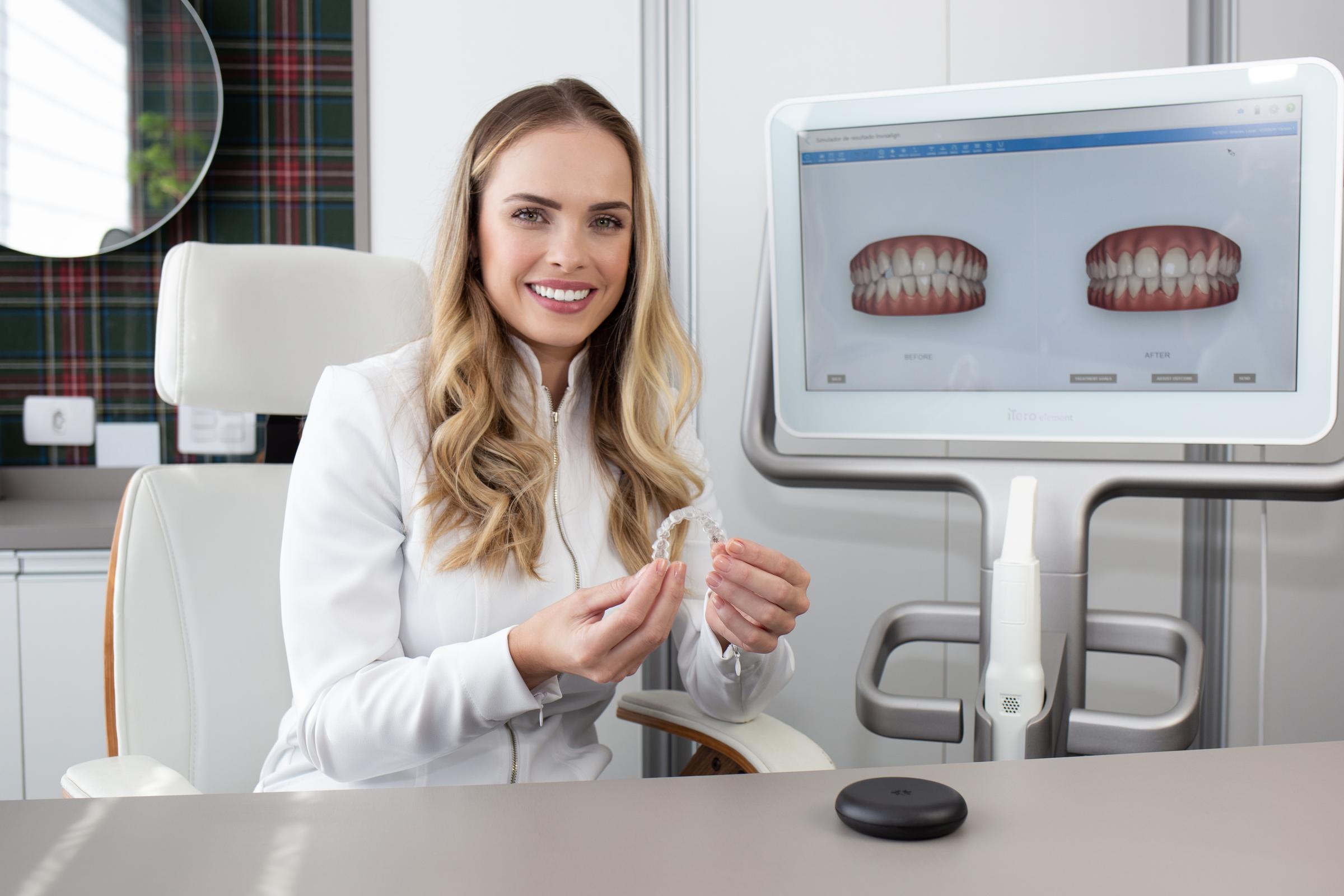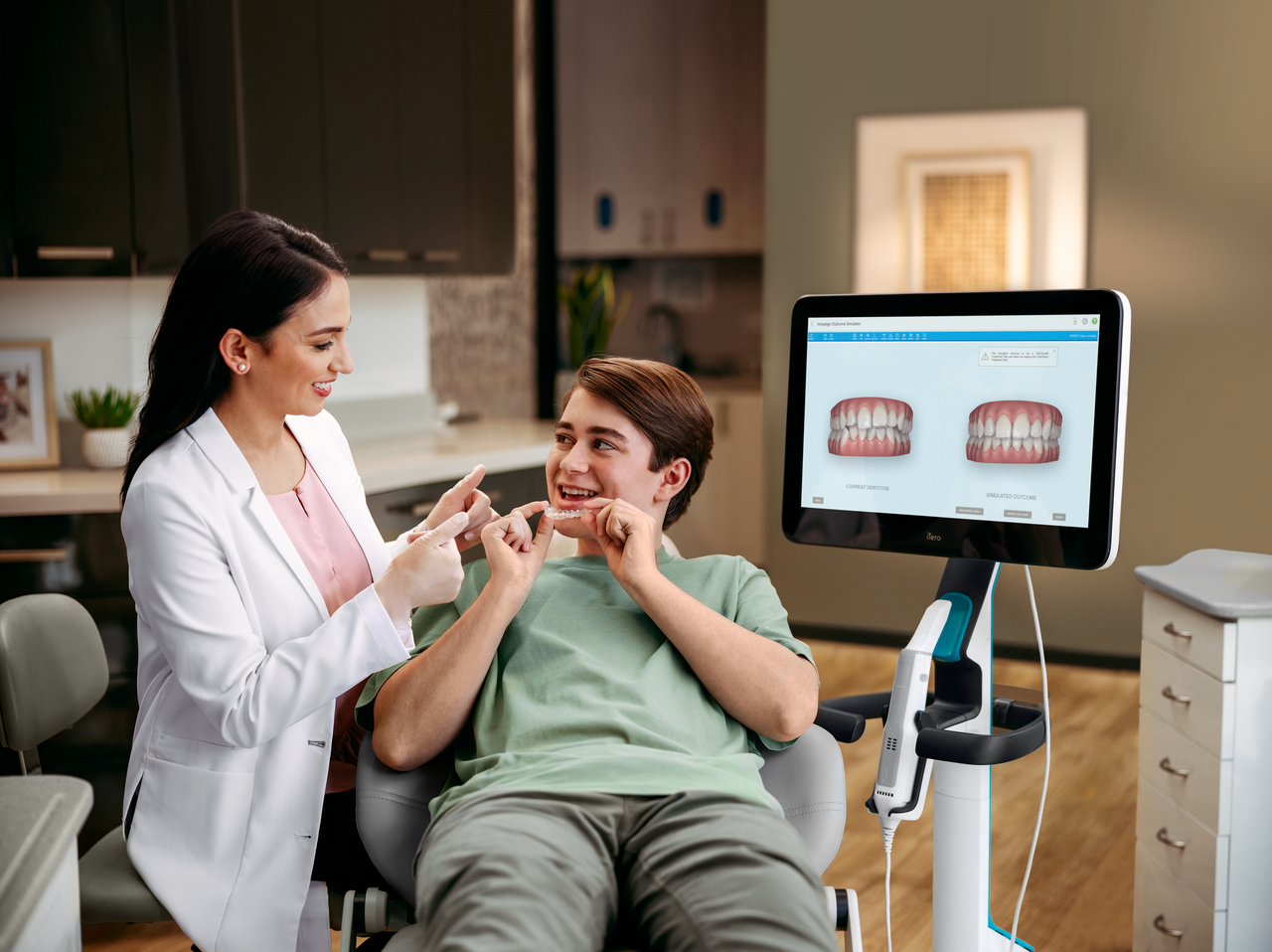Your guide to clear aligners
Hey, congrats! You've decided that you want to be the best you with the most beautiful smile possible. Let’s see if we can get you started on this exciting teeth-straightening journey.
To get more confidence, better oral health1, and all the other benefits of straighter teeth, the next step in this journey is choosing the most suitable clear aligner for you. And that's where this clear aligner guide comes in! We're going to tell you everything you need to know about clear aligners so you can make the best decision for your smile.
What are clear aligners?
Clear aligners are a type of orthodontic treatment that uses a series of clear plastic trays to gradually move your teeth into the desired position2. Because they are made of clear plastic, they are much less noticeable than metal braces, making them a popular choice for adults and teens who want to straighten their teeth without anyone knowing. Invisible braces!
Clear aligners can also be more comfortable3 than traditional braces. And because you can remove them for eating, drinking, and brushing your teeth, you don't have to worry about food getting stuck in your braces or brackets irritating your mouth or gums4.
What are clear aligners made of?
Generally speaking, clear aligners are usually made of a smooth, clear plastic that slips over your teeth5. The material should be durable and strong enough to move your teeth, but also comfortable enough to wear for hours at a time.
Not all clear aligners are made equal, and so the quality of the plastics used varies from brand to brand. Invisalign clear aligners are made from the patented multi-layered SmartTrack material, which is specifically engineered for the Invisalign system, and clinically proven to improve tooth movement with more predictability and more comfort.6
Invisalign aligners are also trimmed based on each patient’s gum line to provide optimal comfort and aesthetics7 — after all, we are moving teeth, not gums.
How do clear aligners work?
Clear aligners work by exerting pressure on your teeth to move them into the desired position8. When it comes to Invisalign clear aligners, a constant gentle pressure is applied: enough to move your teeth into the desired position, but gentle enough to ensure comfort. The trays are custom-made to fit your mouth, and subject to your doctor’s instructions you might need to wear them for 22 hours per day to get the best results.
While it will vary from patient to patient, with Invisalign you will generally need to visit your dentist every six to eight weeks to track your progress and get new clear aligners. From there, you will wear each new aligner for one to two weeks before you move on to the next set. As you progress through the treatment, your teeth will slowly but surely move into the correct position.
How long do clear aligners take to work?
Every clear aligner brand will differ — this is because some clear aligners can only help with mild cases, so those treatments might be shorter. Other brands like the Invisalign system can treat everything from mild to moderate to complex cases, so a mild case could be treated in as little as six months, with the average treatment being 12 to 18 months.
How are clear aligners fitted to your teeth?
Each clear aligner brand will have a slightly different process for fitting their clear aligners. At the lower discount end of the market, they might ask you to make your own impression at home with a putty kit. This is in stark contrast to more modern methods that specialist, in-clinic equipment.
One of those more modern methods is the iTero intraoral scanner, which might be part of the Invisalign treatment system. At your first dentist appointment, your Invisalign dentist or orthodontist9 may use the iTero scanner to create a "5D" image of your teeth and mouth.
This scan is then used to plan your clear aligner and treatment right down to the millimeter — it will show you the simulation of what your teeth might look like at each stage of your treatment, and even what your new smile might look like at the end of your Invisalign journey.
How often will I see my dentist?

Some clear aligner brands will ask you to get your updates through an app in replacement of dentist visits. This might sound tempting — after all, not many people have dentist visits at the top of their to-do lists. You might wish to look for the best of the two worlds: simple digital updates in how your tooth movement is tracking in addition to thorough dentist consultsface to face in clinic appointments where your doctor can thoroughly assess your mouth and progress, as well as answer any questions or queries you might have.
Taking a step back though, it's super important to understand that teeth straightening is an actual medical procedure, and it will have life-long effects on your teeth, roots, jaw, gums, and oral health in general.
For this reason, it's important that you can have in-person follow-ups with a qualified dentist or orthodontist. Your teeth and roots are delicate, so entrusting your orthodontic treatment to a qualified professional will always be the best course of action.
With Invisalign treatment, you get the best of both worlds. You will need to visit your dentist or orthodontist about once every six to eight weeks to monitor your progress and make sure that your treatment is on track. Most appointments can also be done virtually with Invisalign Virtual Care and Virtual Appointment tools, which allows doctors to virtually monitor your Invisalign treatment between in-office visits by reviewing photos that you submit through the My Invisalign app.
Do clear aligners work for all cases?
The answer to this question depends on the clear aligner brand you choose, as some systems will only work on mild cases and some only the front set of teeth. However, keep in mind, the movement of any teeth might affect your overall bite, even if someone has seemingly straight teeth.
On the other hand, Invisalign treatment can be used to treat a range of different cases — from very mild ones that need just a few adjustments, right through to complex cases that might require a lot of pre-restorative work such as extractions, jaw-adjustments etc.
If you're looking to get clear aligners, it's important that you consult with a qualified dentist or orthodontist to find out which system will best suit your needs.
How much do clear aligners cost?
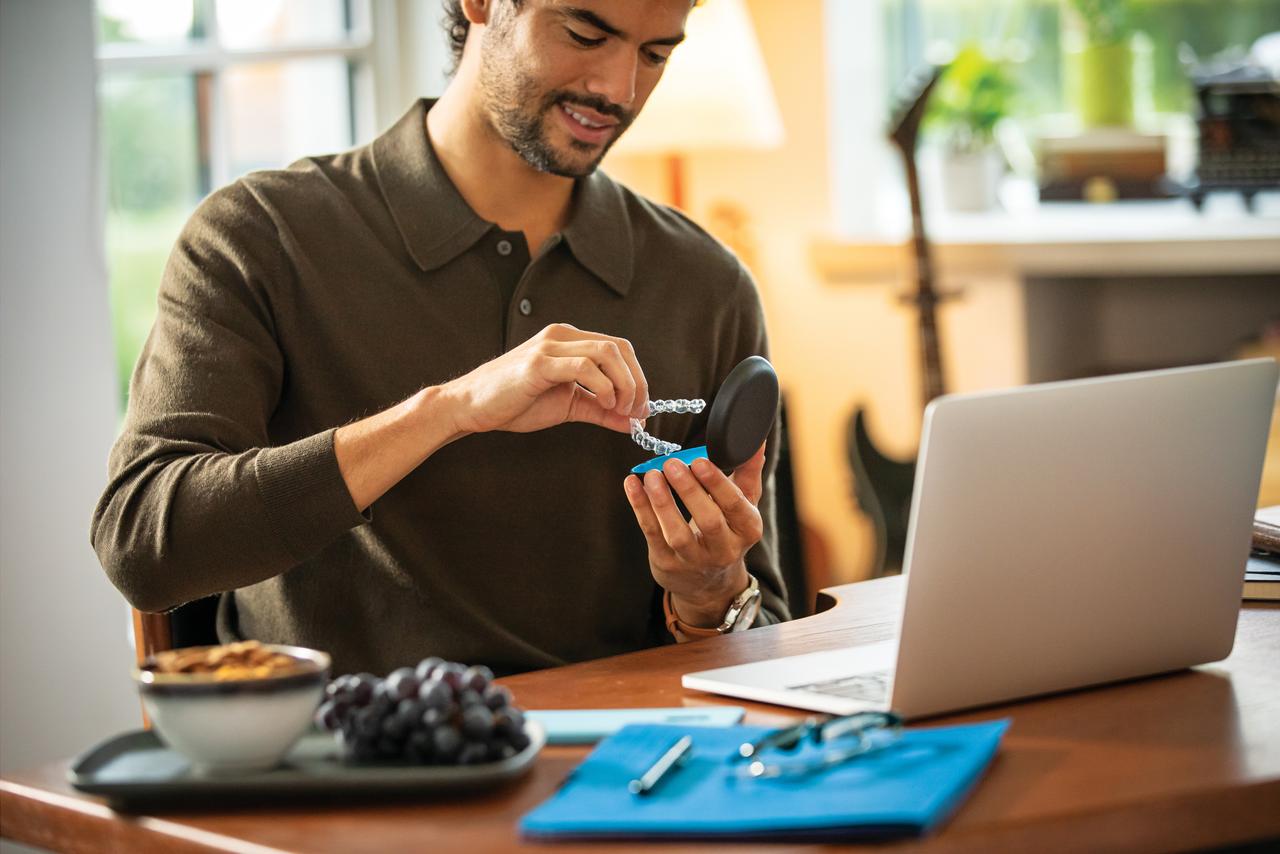
The price of clear aligners can vary quite a bit, depending on the brand, and the severity of your case.
It's important to remember that a teeth straightening procedure is a long-term investment, and the price should be viewed in this light. Invisalign treatment for example can be a bigger upfront investment, but the results are proven from over 16M patients who have used Invisalign treatment worldwide10, and you'll be getting expert care from qualified professionals every step of the way: before, during, and after treatment.
Choosing the right clear aligner system is an important decision that should be made with the help of a qualified dental professional. If you want to benefit from a teeth-straightening system that is backed by years of research, experience, and success, Invisalign treatment could be the right option for you.

The best way to find out how much your treatment will cost is to book a consultation with an orthodontist or dentist through our Find a Doctor page, and they will be able to give you a tailored quote.
1 Based on lower Plaque Index (PI), Probing Depth (PD), and Bleeding on Probing (BOP) of the upper right first molar and upper left central incisors at initial, 1 month and 3 months on 77 patients (age 16-30, 32 Invisalign treatment, 35 fixed appliances, 10 control) in Class I mild crowding cases. Levrini L, et al. Periodontal health status in patients treatet with the Invisalign® system and fixed orthodontic appliances: A 3 months clinical and microbiological evaluation. Eur J Dent 2015;9:404-10
2 https://www.aaoinfo.org/blog/orthodontic-treatment-with-clear-aligners/
3 Study sponsored by Align Technology and based on adult Class I, nonextraction, mild to moderate crowding cases with SmartTrack material. David W. White, Katie C. Julien, Helder Jacob, Phillip M. Campbell and Peter H. Buschang, Discomfort associated with Invisalign and traditional brackets: A randomized, prospective trial. The Angle Orthodontist Nov 2017, Vol. 87, No. 6 pp. 801-808
4 https://www.aaoinfo.org/wp-content/uploads/2020/03/AAO_HandlingOrthoIssuesAtHome_2020.pdf
5 https://www.webmd.com/oral-health/invisible-orthodontic-aligners#1
6 Compared to Invisalign aligners previously made from single-layer (EX30) material.
In a study by Miller et al, with adults measuring pain in the first week of treatment. Kevin Miller et al. “A comparison of treatment impacts between Invisalign aligner and fixed appliance therapy during the first week of treatment.” American Journal of Orthodontics and Dentofacial Orthopedics. Volume 131, Issue 3, pp. 302. e1-302.e9, March 2007.
7 https://www.aaoinfo.org/blog/why-do-straight-teeth-matter/
8 https://www.aaoinfo.org/blog/orthodontic-treatment-with-clear-aligners/
9 The availability of the iTero scanner is dependent on your Invisalign provider.
10 Data on file at Align Technology, September 30, 2023
Wonder if Invisalign treatment is right for you?
Don't worry we can help!
Take our free Smile Assessment!
